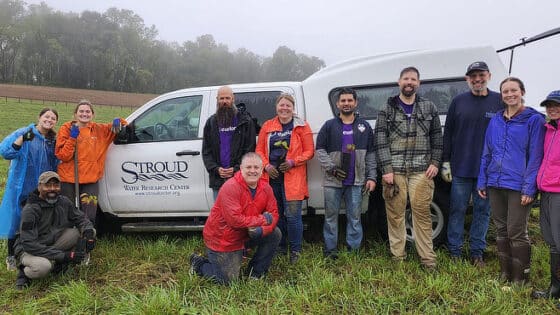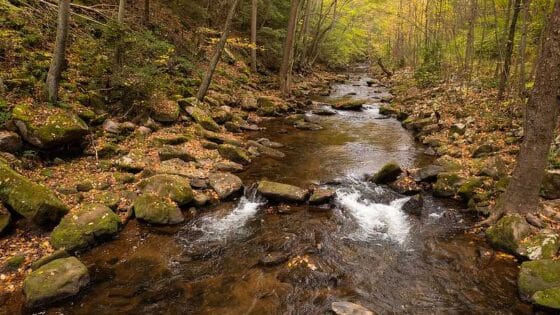Pennsylvania has more than 86,000 miles of rivers and streams. Maintaining and restoring buffers is a key strategy for improving water quality and aquatic habitat in Pennsylvania. The commonwealth has a goal of planting 95,000 acres of riparian forest buffers statewide by 2025 to improve waterways in Pennsylvania and the Chesapeake Bay. From Forest Buffers Along Waterways, Pennsylvania Department of Conservation and Natural Resources (DCNR)
As part of its commitment to meeting the 2025 goal, DCNR organized the 2018 Riparian Forest Buffer Summit to provide conservation practitioners and decision makers with information and skills that they can use in their work. David Wise, Stroud Center Watershed Restoration Manager, made two presentations and served on a panel for a third presentation.
- Findings from the Stroud Center’s Research on Reforestation Methods
This session presented results of trials on a variety of methods including deer fencing, success on legacy sediments, initial stock type, “center hole” bird net method, methods to reduce vole damage, tree shelter options for shade, pre-emergence herbicide used inside shelters, overcoming multiflora rose and reed canary grass, and new trials underway. - Lessons Learned: Sharing Contractor Insights for Successful Buffers
This session shared insights from a recent meeting of contractors and non-governmental organizations involved in installing forested buffers, including tips for success and pitfalls to avoid. - Buffer Maintenance Challenges, Best Practices, and Possible Solutions
Presenters (Wise; Art Gover, Research Support Associate, Penn State Wildland Weed Management; Hannah Smith-Brubaker, Executive Director of Pennsylvania Association for Sustainable Agriculture and farmer at Village Acres Farm in Mifflintown, Pennsylvania) discussed the critical importance of maintaining riparian forest buffers after planting and offered the latest best practices and solutions to challenges. The presentation was followed by a Q&A session.
For more information about watershed restoration, visit our Restoration resources page or attend a restoration event.



